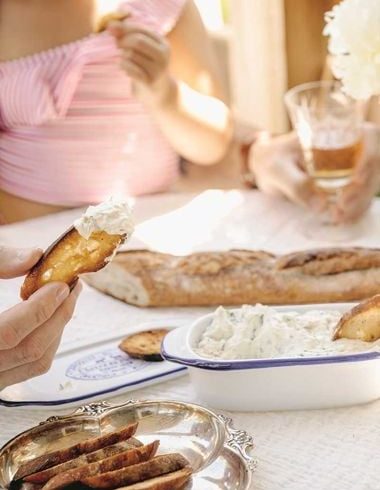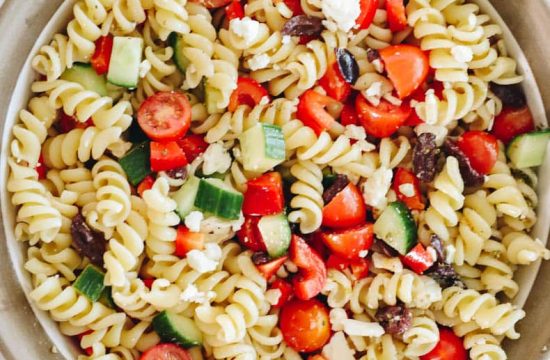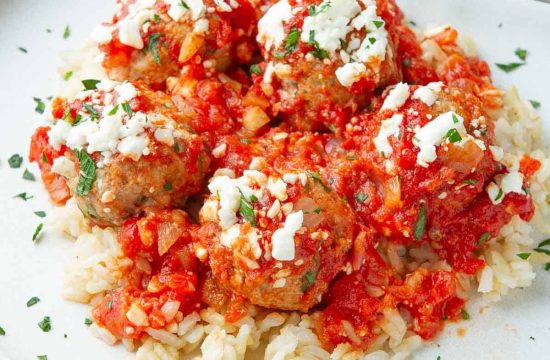Get J-C Poirier talking about food, and the word “honest” will be sprinkled throughout the conversation like the Diamond Crystal kosher salt the Michelin-starred chef uses in the kitchen of his Quebecois bistro, St. Lawrence, in Vancouver’s Downtown Eastside.
Honest food
Poirier’s favourite food is “honest food.” As a culinarian, and one paying homage to his French-Canadian heritage, he’s all about “being honest with his food.”
But unlike the opaque marketing buzzword that “honest” has become in the food world, Poirier applies it with earnestness to the cooking that inspires him and that he hopes to encourage in others, including with his recently released cookbook, Where the River Narrows (Appetite by Random House, 2022).
“What I mean is, you’ve got to be attentive to yourself as a chef or as a cook. It comes by knowing yourself and your background, and where you come from,” Poirier says. “Being honest is offering a part of who you are. That’s how I know the difference between good cooking and great cooking.”
Honest roots
Poirier comes by his greatness at cooking, well, honestly. All apron strings lead back to his bon vivant mother, who was as convivial as she was creative in the kitchen of the family’s Saint-Jérôme, Quebec, home.
She bought local and stretched a dollar. She also pushed boundaries with the young taste buds around the table, exposing Poirier to quinoa before it became a household grain and making her own tofu.
Honest training
The magic of cooking and gathering over a meal compelled Poirier to eventually enrol in culinary school. He spent a year training in classical French techniques before putting them to the test in the storied Les Remparts in Old Montreal.
Poirier was drawn to the physical aspect of cooking, but like many young people forging their own path, he was eventually lured away from the place that reared him. Vancouver beckoned.
After stints at Rob Feenie’s Lumière, and even in his own Italian-inspired dining rooms and eateries, a meal in Paris inspired Poirier to get back to his roots in the kitchen. In 2017, he opened St. Lawrence, a cozy 40-seat space that’s like “entering my grandma’s house.”
“It’s being authentic to myself,” he says.
Honest legacy
Poirier retraces his professional journey and personal growth in <Where the River Narrows> using recipes that channel timeless and foundational French and Quebecois cooking techniques, and a more relaxed Poirier at home.
If he’s being honest, Poirier hopes the book will be a legacy to share with his two young daughters, Aïla and Florence. It also serves as a business card for a restaurant that’s earning prestigious accolades, including Chef of the Year and Restaurant of the Year by Vancouver Magazine. Last fall, dining authority Michelin bestowed one of its coveted stars upon St. Lawrence, too.
Honest values
That success can be linked to the professional values Poirier upholds in addition to raw talent. He leads by healthy example, eschewing alcohol, especially on the job, and espousing work-life balance by opening St. Lawrence only four days a week. He also offers employment benefits, including four weeks of vacation every year. His staff stay, and success follows honestly.
Looking ahead, Poirier knows only that he will stay true—to himself and his craft.
“I’ll just keep going forward and try to be me,” he says. “And my team? Try to be better and better every day at what we do, and the rest will come.”
Key ingredients
Quality over quantity is as much a mantra for J-C Poirier as honesty, especially when it comes to ingredients. That’s why he encourages home cooks to splurge on premium options. They make a significant difference to the end result, he argues, and because of their quality, you’ll need less of them, too, extending their value.
Poirier’s essential top-shelf ingredients
- grass-fed, cultured butter
- organic all-purpose flour for baking; whole wheat, buckwheat, and Red Fife flours for bread making
- top-notch oils for a variety of purposes, including grapeseed oil for cooking, first-pressed canola oil for salad dressing, and extra-virgin olive oil for finishing dishes
- Diamond Crystal kosher salt for seasoning food and Maldon sea salt for a finishing touch to add texture
- high quality vinegars, including red wine, balsamic, and apple cider
Cooking for the health of it
French food doesn’t always conjure healthy eating. After all, the French eat four times as much butter and 60 percent more cheese than the average American. There are health-conscious ways to stay true to both your inner gastronome and the cuisine, however. For J-C Poirier, it’s cooking with emotion, logic, and love, and remembering the following.
Less is more
“I don’t need a 10 ounce piece of beef. I need maybe four or five, and a really high quality,” Poirier says. “I pay the price for it, but I just eat less.”
Eat the seasons
“In the summer, I will buy all the vegetables from the farm,” he explains. “When it’s asparagus season, we eat asparagus. In the winter, we eat potatoes and parsnips and sunchokes.”
Cook for yourself—and from scratch
“A lot of people buy processed food, and that has a higher amount of salt or sugar than if I start from scratch and control what I put in there.”
Watch your fat
Use high-end, pure versions of butter and cooking oils rather than refined options or those cut with other ingredients that could negatively impact health. “It’s being a little more aware, I think, of what people are buying,” Poirier says.

Cervelle de canut is basically the Boursin of France, an herbed fresh farmer’s cheese spread that’s a speciality of Lyon. The name is kind of weird, as it literally means “silk worker’s brain,” named after nineteenth-century Lyonnaise silk workers, who were called canuts. Sadly, the name reflects the low opinion of the people towards these workers. Happily for us, though, it’s delicious—creamy, fragrant, and fresh at the same time. Cervelle de canut is one of my family’s favourite dishes. It’s a great make-ahead appetizer that you can pop out of the fridge once your guests arrive. Use a full-fat cream cheese for the dish, or it will be too runny and less delicious.


Tourtière is, for me, the dish that best represents Québec. It can be traced back to the 1600s, and there’s no master recipe; every family has their own twist. Originally, it was made with game birds or game meat, like rabbit, pheasant, or moose; that’s one of the reasons why I prefer it with venison instead of beef or pork.
[CREDIT] Excerpted from <Where the River Narrows: Classic French & Nostalgic Québécois Recipes From St. Lawrence Restaurant> by Jean-Christophe Poirier. Written with Joie Alvaro Kent. Copyright © 2022 Jean- Christophe Poirier. Cover and book design by Jennifer Griffiths. Photography by Brit Gill, except page 148. Photo on page 8 by Amy Ho. Photos on pages 2, 5, and 6 courtesy of the author. Published by Appetite by Random House, a division of Penguin













